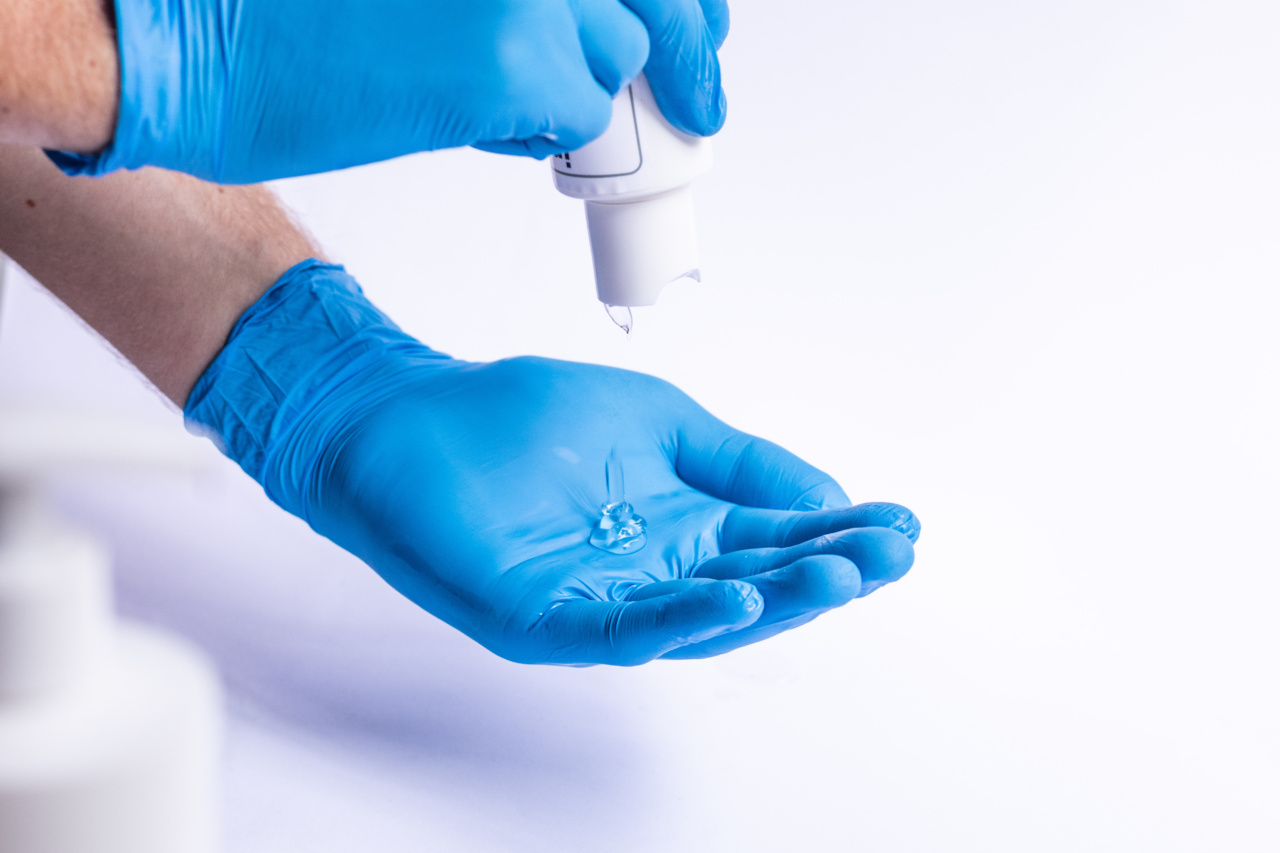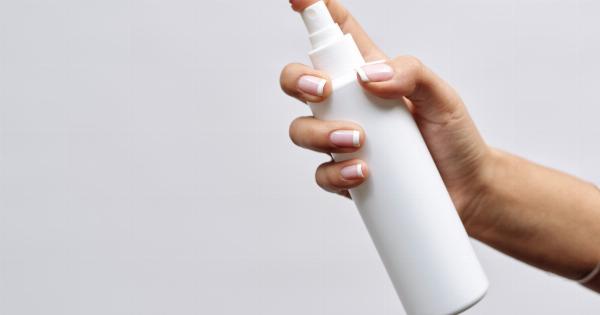In today’s fast-paced world, where we are constantly exposed to various germs and bacteria, keeping our hands clean is of utmost importance.
Many healthcare professionals and experts recommend the regular use of disinfecting hand gel as an effective preventive measure against infections. This article explores why disinfecting hand gel is crucial and how it helps minimize the risk of infection.
The Power of Hand Sanitizers
Hand sanitizers, also known as disinfecting hand gels, have gained immense popularity in recent years due to their convenience and effectiveness in killing germs.
These gels typically contain alcohol, such as ethyl alcohol or isopropyl alcohol, which has potent antimicrobial properties.
When applied to the hands, the alcohol in hand gel works by disrupting the outer layer of microbial cells, including bacteria and viruses. This process deactivates their ability to grow and reproduce, effectively killing them.
As a result, using hand gel can significantly reduce the number of harmful microorganisms present on the skin’s surface.
Advantages of Disinfecting Hand Gel
Disinfecting hand gel offers several advantages over traditional soap and water handwashing:.
1. Portability and accessibility
Hand gel comes in small, portable containers that can be easily carried in pockets, purses, or bags.
This accessibility ensures that you can have it readily available wherever you go, providing instant hand hygiene when soap and water are not readily available.
2. Time-saving
Unlike handwashing, which requires access to a sink, soap, and water, using hand gel is a quick and efficient process. It eliminates the need for a lengthy handwashing routine, making it a practical choice for busy individuals.
3. Increased compliance
Hand gel offers a more convenient option for maintaining hand hygiene, leading to increased compliance.
People are more likely to use hand gel regularly and consistently because of its ease of use, especially in settings where handwashing facilities may be limited.
4. Effectiveness against a wide range of microorganisms
Disinfecting hand gel with at least 60% alcohol content has been proven to effectively kill many types of harmful microorganisms, including bacteria, viruses, and fungi.
This broad-spectrum activity makes it an excellent defense against various infectious agents.
5. Non-drying formulas
Many commercially available hand gels now come with added moisturizers, such as aloe vera or glycerin, to prevent drying out the skin.
This moisture balance proves essential in preventing skin irritation and maintaining the skin’s natural barrier function.
Using Disinfecting Hand Gel Properly
To reap the maximum benefits of disinfecting hand gel and minimize the risk of infection, it is crucial to use it correctly:.
1. Apply an appropriate amount
Squeeze enough hand gel onto your palm to cover all surfaces of both hands. The recommended amount is typically around a dime-sized dollop.
Applying too little may not effectively kill all microorganisms, while using too much may lead to excessive drying of the skin.
2. Rub hands together thoroughly
Thoroughly rub the gel over all surfaces of your hands, including the palms, back of hands, between the fingers, and even under the nails. Continue rubbing until the gel has evaporated and your hands feel dry.
This process typically takes about 20-30 seconds.
3. Use it when soap and water are unavailable
Disinfecting hand gel should be used as an alternative to handwashing when soap and water are not easily accessible. It is particularly useful in situations such as traveling, camping, or during a busy day when frequent handwashing is impractical.
4. Avoid using hand gel on visibly soiled hands
If your hands are visibly dirty or greasy, hand gel may not effectively remove the dirt or grime. In such cases, it is best to wash your hands with soap and water, as handwashing has been proven to be more effective at removing visible debris.
When to Use Disinfecting Hand Gel
Disinfecting hand gel can be used in various situations to maintain proper hand hygiene:.
1. Before and after eating
Using hand gel before handling food helps prevent the transfer of germs from your hands to the food you are about to eat. Similarly, applying hand gel after eating ensures any potential microbes on your hands are eliminated.
2. After using public transportation
Public transportation surfaces, such as handrails, ticket machines, and door handles, can harbor numerous germs. Using hand gel after using public transportation helps minimize the risk of picking up these germs and spreading them to others.
3. After using shared facilities
Facilities with high traffic, such as public restrooms, gyms, and libraries, can become breeding grounds for harmful microorganisms.
Using hand gel after using shared facilities helps reduce the risk of picking up germs from surfaces or contact with other individuals.
4. When interacting with sick individuals
If you come into contact with someone who is sick or exhibiting symptoms of illness, using hand gel afterward is essential.
This precautionary measure helps reduce the chance of spreading any potential pathogens from the sick individual to yourself or others.
The Importance of Regular Handwashing
While disinfecting hand gel is highly effective at killing many types of microorganisms, it is important to note that it cannot replace traditional handwashing entirely. Handwashing with soap and water remains the gold standard for hand hygiene.
Disinfecting hand gel should be seen as a complementary measure when handwashing facilities are not available or practical.
Handwashing with soap and water should be performed in the following situations:.
1. Visibly dirty or greasy hands
When your hands are visibly soiled, hand gel may not effectively remove the dirt or grime present. In such cases, thorough handwashing with soap and water is essential to ensure proper cleanliness.
2. Before and after caring for someone who is ill
If you are providing care for someone who is sick or has a weakened immune system, handwashing is crucial before and after any direct contact. Handwashing helps prevent the transmission of germs, especially in healthcare settings or at home.
3. After using the restroom
Hand gel should not be relied upon solely after using the restroom. Handwashing with soap and water is considered vital to eliminate harmful microorganisms that may be present, preventing their spread to others.
Selecting the Right Hand Gel
When choosing a disinfecting hand gel, it is important to consider the following factors:.
1. Alcohol concentration
Look for hand gels with an alcohol concentration of at least 60%, as this is the minimum concentration required to effectively kill most types of germs.
Higher alcohol concentrations (70-90%) are even more potent against a wider range of microorganisms.
2. Added moisturizers
If you have dry or sensitive skin, consider hand gels with added moisturizers to prevent skin dryness and irritation. Aloe vera, glycerin, or vitamin E are commonly included to nourish and protect the skin.
3. Fragrance options
Hand gels come in a variety of fragrance options, including unscented varieties for those with fragrance sensitivities. Choose a fragrance that suits your preferences and does not irritate your senses.
In Conclusion
Disinfecting hand gel is a valuable tool in minimizing the risk of infection. Its portability, effectiveness against a wide range of germs, and ease of use make it an excellent choice for maintaining proper hand hygiene.
However, it should not replace regular handwashing with soap and water, especially in situations where hands are visibly soiled. By incorporating both hand gel and handwashing into our daily routines, we can significantly reduce the risk of infection and promote a healthier environment for ourselves and those around us.




























